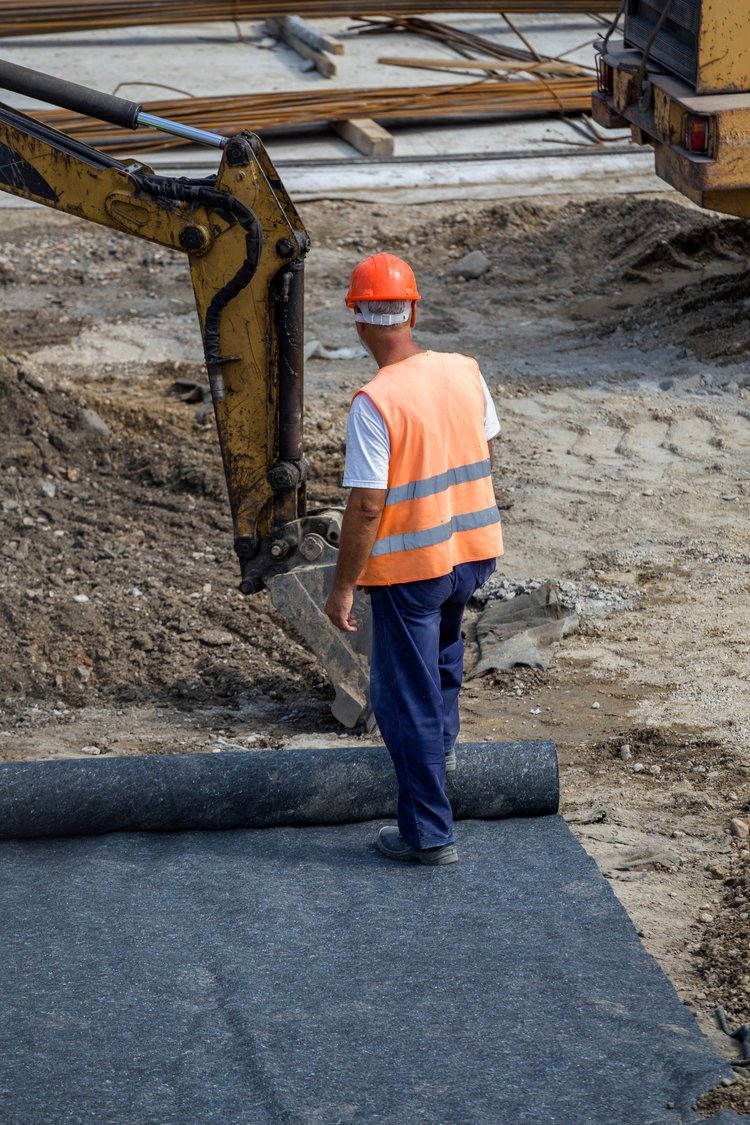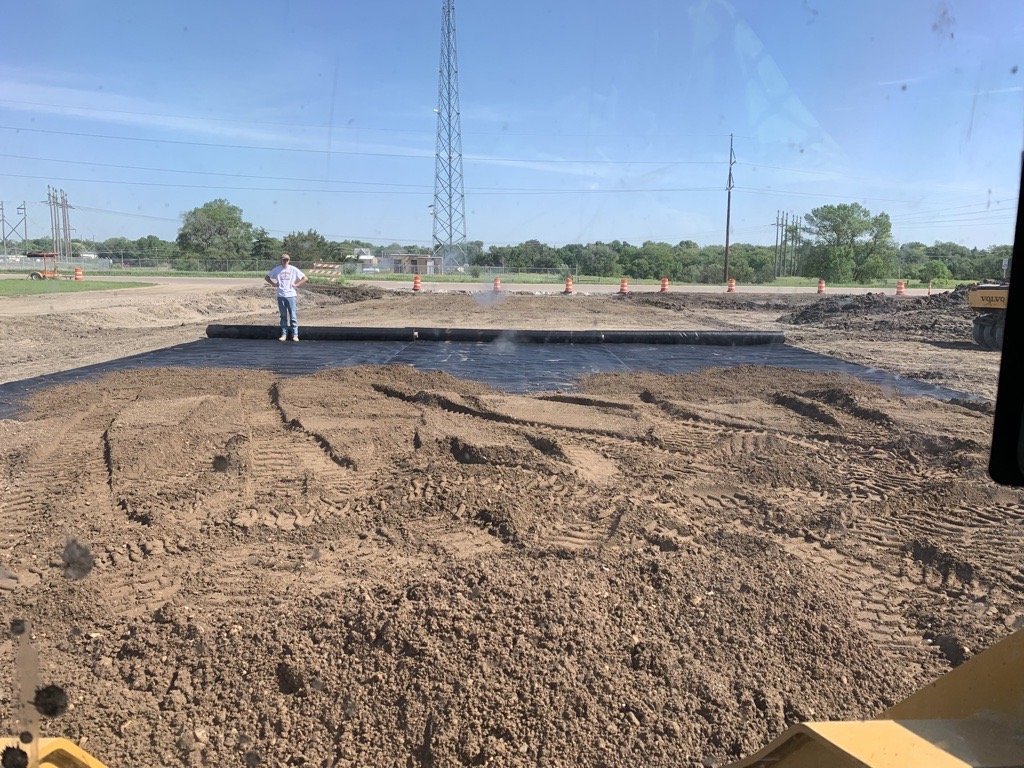THE ADVANTAGES OF GEOTEXTILES FOR EROSION CONTROL AND MORE ON JOB SITES
Rolls of geotextiles which come in various forms
When was the last time you were on a job site where you didn't see large rolls of fabric lying around somewhere? You'd probably have to go way back in your memory bank to find one. These penetrable fabrics, called geotextiles, are an essential part of most construction projects today. When used in construction projects, they have numerous advantages, including controlling soil erosion, separating soil types, and stabilizing soft soils.
Defining Geotextiles
Geotextiles are one type of geosynthetic. They play a significant role in civil engineering, specifically geotechnical and environmental engineering. When embedded into the soil, these manufactured, permeable liners do an outstanding job of improving drainage, filtering, reinforcing, protecting, and separating. They're usually made from either polyester or polypropylene and come in woven and non-woven fabrics. Woven geotextiles are durable and therefore are often used for constructing roads and parking lots because they possess a high load carrying capacity. Their strength comes from their weaves being close-fitting and porous. Woven and non-woven can also come in a multitude of different weights, weaves, ratings, and features that drastically alter their overall strength and uses. Woven is usually stronger than non-woven for its weight. Woven will also repel water like a tarp, while non-woven will soak up water like a sponge. There are also different strengths associated with woven fabrics. Some are fragile and only act as separators, while others are very thick and can create solid surfaces. There are even specialty fabrics that will wick water to the edges of the material using special fibers. As you can see, not all geotextiles are created equal. Other applications for these filter fabrics are embankments, retaining structures, reservoirs, dams, coastal engineering, and more.
Geotextiles Cost-Effectiveness
A worker rolling out geotextiles on a job site
Using geotextiles is more cost-effective than soil nailing, requiring treating unstable soil slopes (natural or manufactured) with steel nails. There is one geotextile that is commonly used for stabilizing slopes and controlling erosion called coir. It's a coconut fiber with significant mechanical strength, and depending on the weight of the fabric, it could last up to five years without needing repairs. The evolution of geotextiles since the 1950s has changed the way roads are engineered and built. Before geotextiles were used, problems such as soil shifting and rutting were common.
The stability that the geotextile provides when layered with the soil results in a much improved and stable surface. The strength of the geotextile fabrics allows for less engineered fill or base course on roads and parking lots. Instead of 8-10" of base course, a road can be built with one layer of geotextile fabric and 6" of gravel, saving time and money in the construction process.
Application of Geotextiles
Not all geotextiles can be used in all locations. The type of soil does matter; therefore, what might work well on a road in the US will not necessarily work well in foreign countries, so standards and practices for specific locations need to be factored in before spending money on materials. Installing geotextiles consists of rolling out the fabric on the subgrade. Using weights to hold it down as you're laying it is an excellent idea to hold it in place until the top aggregate is dumped on it. The strength of a geotextile fabric comes from the tension each of the woven strands can provide. You can think of it as rebar in concrete. A typical installation mistake contractors make is allowing the fabric to be installed with large wrinkles. This approach is effectively like only adding small chunks of un-connected rebar to a concrete slab. The strength of the finished result is significantly reduced, and weak points in the road or parking lot are created. These weak points can also result if the proper overlap between rolls is not achieved. Most projects have a specified overlap to maintain the strength of the fabric at joints. You can think of this as the overlap of rebar in concrete. This geotextile layer also acts as a separator between the subsoil and the aggregate layer. This layer of protection keeps the aggregate from sinking into the subsoil and therefore is sturdier. The "bridging" strength of geotextiles can be incredible.
One of our VCEs can recall a project he worked on that had an existing sediment pond where a truck entrance had to be created for a new distribution center. The sediment pond was so muddy that their low ground pressure D6K would get buried up to the top of the tracks just driving through it. They were able to float out a layer of woven geotextile fabric on top of the mud slurry. They then rolled out a layer of geogrid (a strong plastic mesh) on top of the geotextile fabric. They then brought in the base course and pushed out a 1" lift followed by a 6" lift with the dozer. After the 6" lift was finished, a fully loaded gravel truck grossing 150k lbs was able to use the truck entrance with no problems. The power of geotextiles is not to be underestimated.
Geotextiles under soil
Easy to use, easy to transport, and cost-effective; it is easy to see why geotextile fabrics have widespread adoption and why they are here to stay. When it comes to road construction, we know our stuff. Give us a call so we can jump in and help you figure out precisely what you need to plan and build your road projects, including one of our exact 3d road models!



